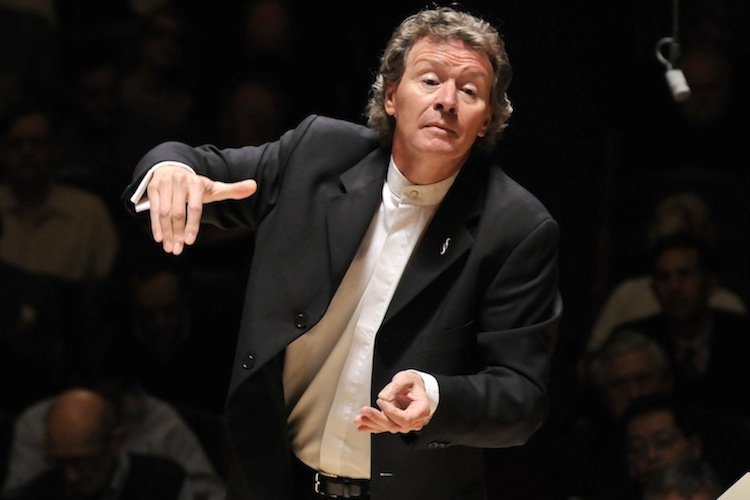Haydn in plain sight with Christophers and H&H

Harry Christophers led the Handel and Haydn Society in music of Haydn Friday night at Symphony Hall. FIle photo: Stu Rosner
As part of an all-Haydn concert Friday night at Symphony Hall, the Handel and Haydn Society turned its attention towards a seldom-heard work by the Classical-era master.
The Violin Concerto in C major—likely written by a composer still in his 30s and long before ruffled shirt and powdered wig came to dominate his image as “Papa Haydn”—is a lithe and charming piece, full of elegant melody and daring passagework for the soloist. It was indeed a treat on an already robust program of Haydn, led by Harry Christophers, that featured two symphonies as well as the overture to the composer’s opera, Lo Speziale.
The Violin Concerto spotlighted H&H concertmaster Aisslinn Nosky in a dual role as soloist and leader. Her playing was consistently sparkling in its energy and finely attuned to Classical polish and style.
That is due to Nosky’s shimmering tone and exceptional command of her instrument. In a few spots in the concerto’s third movement, though, the tricky figures seemed to get the better of her, resulting in passing instances of spotty intonation. But she was in fine form in the opening movement, where she rendered the double stops and numerous trills of her darting solo line with ease.
The H&H strings supplied sturdy accompaniment. Nosky and company leaned into their phrases in the first movement for emphasis. Especially attractive was the second movement, which featured Nosky floating an aria-like melody over light pizzicatos.
The powers of the full H&H period instrument orchestra were on display in the opening work of the evening, Haydn’s Symphony No. 7, Le Midi.
One of a group of three symphonies Haydn composed in the early 1760s, the Seventh is a delightful work and shows a composer making use of the twists, turns, and surprises that would come to characterize his later style.
Central to this piece are the solos for strings and winds that weave in and out of the orchestral texture. Nosky was in the solo seat for much of the second movement, her violin line filled with the mournful airs of an operatic melody. Later in the movement she traded honey-toned passages with cellist Guy Fishman, who answered with singing phrases.
In the first movement, Nosky found an equal in violinist Susanna Ogata, the two spinning elegant melodies between each other with finesse. The movement’s bubbly character was often poignant thanks to the fine playing from the oboes, and the finale featured dexterous solo work from principal flutist Christopher Krueger.
Harry Christophers led a vivid reading. He conducted with a firm sense of the music’s theatricality, taking time to shape phrases through various shades of dynamics and occasional accents. The orchestra, following his every move, delivered playing of stirring energy, particularly in the Menuet and finale.
If Le Midi showed Haydn with a spark of his elegance and humor, then his Symphony No. 83 in G minor, also heard Friday night, featured those aspects in full form.
Nicknamed La Poule (the Hen) for the simple clucking theme that appears in the first movement, this symphony, one of the six Paris Symphonies, still manages to surprise listeners even after repeated hearings.
Christophers took the orchestra inside and out of the music’s depths, mining the drama from the outer movements and guiding the diminuendos of the second down to a mere whisper.
But the conductor also displayed a solid feel for the work’s larger architecture. The melodies of the second movement seemed to unfold in great arcs. The Menuet was like a precision-cut gem, with Christophers leading a slower tempo for the trio to good effect. The musicians responded with some of their sharpest playing of the evening.
Rounding out the second half of the concert was the overture to Haydn’s opera Lo Speziale, a brief but exciting piece that brimmed with chugging energy from the strings and svelte cantabile playing from flutist Christopher Krueger.
The program will be repeated 3 p.m. Sunday at Symphony Hall. handelandhaydn.org.
Posted in Performances